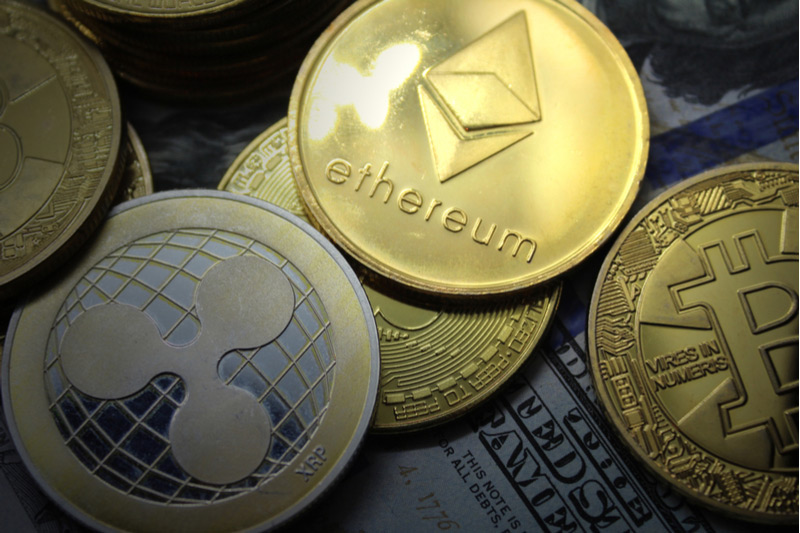- The legacy cross-border payment methods are faced with delays, high fees, and lack of transparency.
- Blockchain technology has changed the game by making transactions quicker, cheaper, and peer-to-peer.
- More and more companies have emerged, offering various blockchain-based solutions.
The global cross-border payments are projected to reach $156 trillion in 2022. According to the Bank of England, this amount will balloon to $250 trillion by 2027. Cross-border transactions take place through channels such as SWIFT, which provides secure messaging services to redirect transactions through a variety of banks.
Currently, the Society for Worldwide Interbank Financial Telecommunications (SWIFT) has over 11,000 participant banks and financial institutions, and it transmits about 42 million messages a day.
What should ideally be a simple peer-to-peer transaction between two parties in different countries is, in reality, a messy and complicated affair that generates tens of billions of dollars in fees for the banks. According to a joint report by JP Morgan and Oliver Wyman, global corporations spent $120 billion on transaction fees in 2020 to facilitate cross-border transactions.
Not only does redirecting messages through different banks delays the transaction process, but it also leads to high fees and excessive documentary requirements. According to the World Bank, the estimated cost of globally transmitting $200 is 6.5%. In some countries, it goes as high as 10%. The high costs and slow speed of transactions have forced users to look for faster and cheaper alternatives to the legacy methods.
Crypto for Cross-Border Payments
Following the Russian invasion of Ukraine, Kiev was quick to start accepting crypto donations. It made a lot of sense because donations through the traditional banking methods could be difficult and time-consuming, while crypto donations arrived instantly. Ukraine received over a hundred million dollars in crypto.
Blockchain technology has begun to disrupt the cross-border payments market by making transactions quicker, cheaper, and peer-to-peer. As per a report from Juniper Research, blockchain will not only improve payment transparency and traceability but also reduce the cost of international transactions by $10 billion in 2030.
Also, crypto doesn’t care about borders. It’s for the banked, unbanked, and underbanked in every part of the world. Earlier this year when the Western nations kicked Russian banks out of the SWIFT messaging system, Russian citizens, including those against the Ukraine invasion, found themselves unable to make cross-border transactions. The West effectively weaponized finance to cripple the Russian economy. In the process, it also exposed the limitations of the conventional cross-border payment methods.
Stablecoins and Payment Networks
Until the arrival of fiat-pegged stablecoins, it truly was a nightmare to settle transactions using cryptocurrencies. The high volatility made crypto undesirable for most individuals and businesses. Stablecoins such as Tether (USDT) and USD Coin (USDC) closely follow the US Dollar. They ensure that the recipient doesn’t have to rush to convert the money into fiat immediately to avoid a steep decline in prices.
Stablecoins are the least volatile of cryptocurrencies. That’s why leading payment networks like Visa (NYSE:V) have integrated them, allowing users to settle transactions using the likes of USDC. Big Banks and money transfer companies that generate billions from transaction fees on cross-border payments will have to figure out new sources of revenue in the years to come.
Ripple (XRP) is a leading payment network that uses blockchain technology to provide instant, secure, and reliable international transactions to individuals as well as institutions. It has already partnered with numerous financial institutions in Asia, which it sees as a major growth market. Ripple can facilitate payments not just in XRP but also in other cryptocurrencies, fiat currencies, and other commodities.
Crypto Could Get Complicated, Too
It’s highly unlikely that a single payment network or blockchain is going to monopolize the global cross-border payments market. There’s no standardized implementation of blockchain technology. With hundreds of private, public, and consortium blockchains, we’ll soon find ourselves in an increasingly fragmented payments market where the lack of communication between siloed blockchains would cause headaches to users.
Making things even more complicated will be the dozens of Central Bank Digital Currencies (CBDCs). According to BIS, over 80 central banks are on track to launch their own CBDCs. Among those considering introducing CBDCs are China, the US, Switzerland, Israel, the UK, Japan, Russia, South Korea, Sweden, Canada, Australia, and Singapore. At this stage, there’s little clarity on what blockchains they’ll use or how they’ll evolve.
It could easily become a messy world. Thankfully, cross-chain bridges like Wanchain have emerged to facilitate a seamless flow of value and information in the fragmented blockchain ecosystem. For instance, Wanchain has joined hands with XinFin to develop bridges connecting the latter’s XDC token to BNB Chain, Polygon, Avalanche, and Wanchain. XinFin is a hybrid and permissioned blockchain building a decentralized network to facilitate global finance.
Wanchain has already launched a direct BTC-ETH bridge, the world’s first. It has built decentralized bridges that connect more than 15 Layer 1 and Layer 2 networks, including but not limited to Arbitrum, Avalanche, Bitcoin, Ethereum, Litecoin, XRP Ledger, Polkadot, XRP Ledger, and XinFin.
Any blockchain – whether public, private or consortium chain – can easily integrate with Wanchain to establish connections between different ledgers and perform low-cost inter-ledger asset transfers.
Wanchain is building a distributed financial infrastructure for digital assets. It will allow any institution or individual to set up their virtual teller window on the platform to provide transaction settlements and other services.
Closing Thoughts
Cryptocurrencies are changing the global financial landscape, and the conventional methods of cross-border transactions are among the biggest sectors that crypto is disrupting. The conventional methods of international transactions are bloated, slow, and expensive. They lack transparency. That’s exactly the kind of problem cryptocurrencies solve. Crypto has shown that real-time, low-cost international transactions are well within the reach of the masses.
